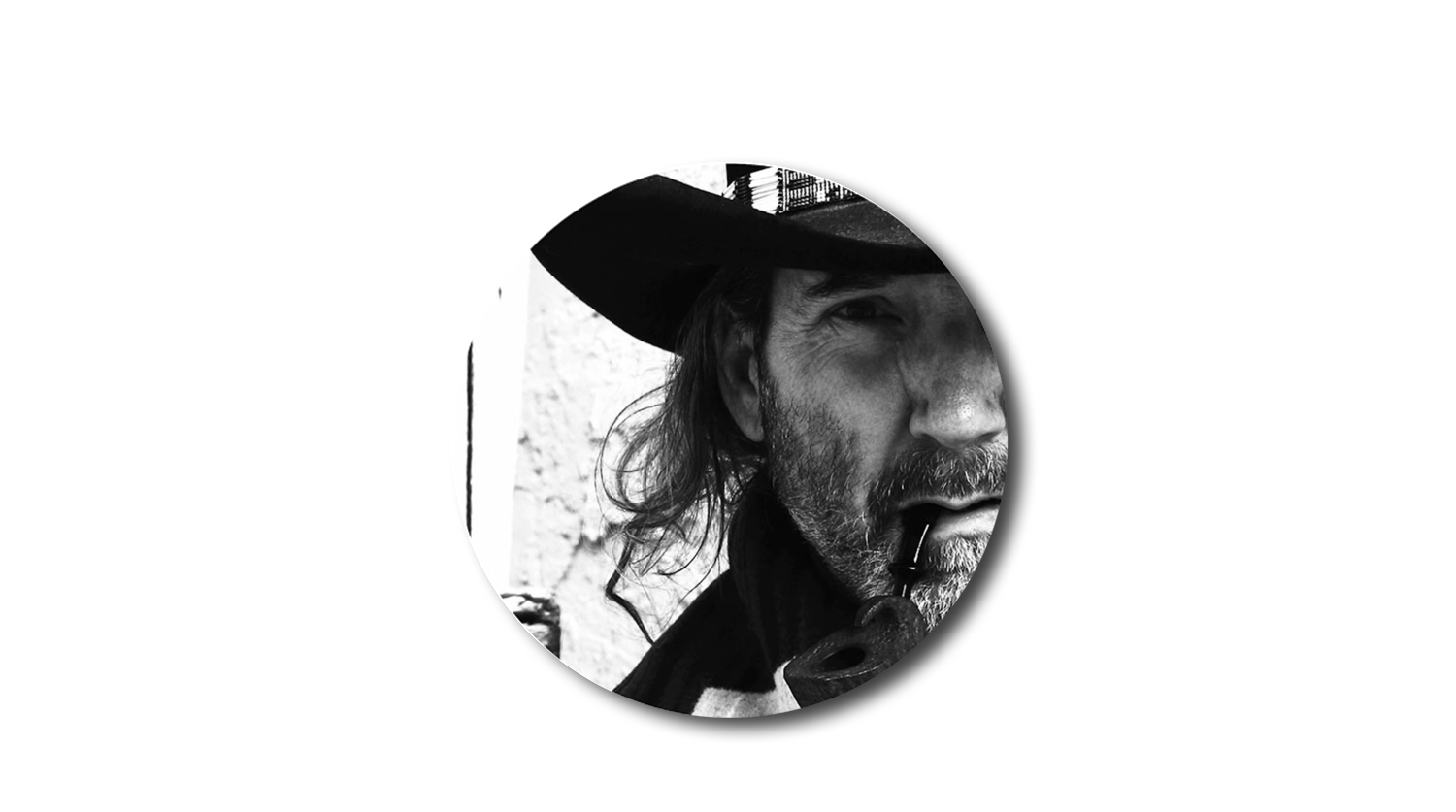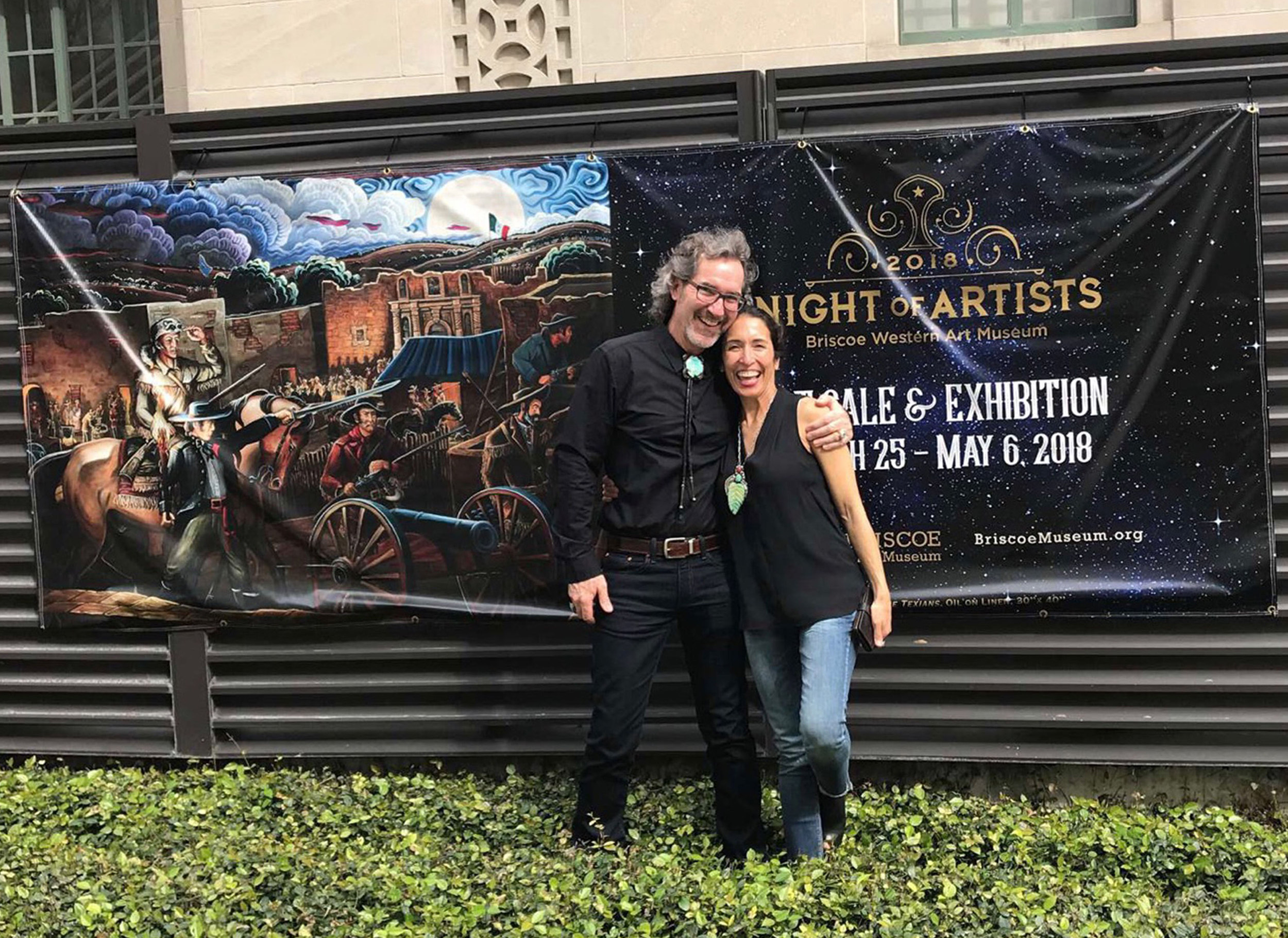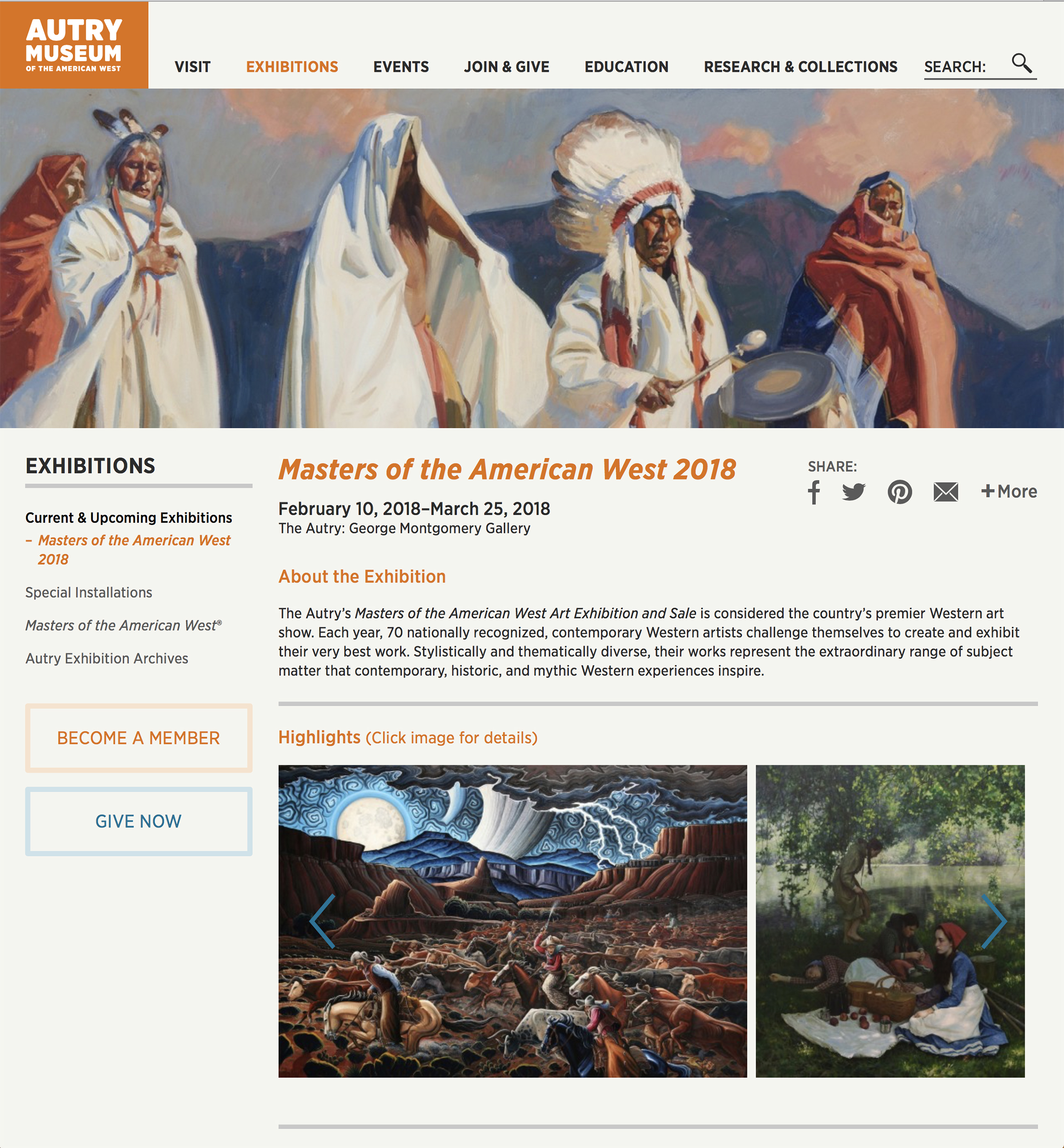This years' Night of Artists show at the Briscoe Museum was filled with high energy and excitement. It featured a number of new events including the first ever Briscoe Collector's Summit as well as an Exhibition Preview, Artist Awards Dinner & Live Auction on Friday night. I was honored to be invited to serve this year on the Collector's Summit panel along with iconic Western artist, Martin Grelle. Other panelists included, Tylee Abbott, Associate Vice President and Specialist in American Art at Christie's and Amy Scott, Chief Curator at the Autry Museum of the American West. The summit was moderated by Joshua Rose, Editor of American Art Collector and Western Art Collector Magazine. For me, the highlight of the show was Friday night when I was incredibly humbled and honored to received the 2018 William B. Travis Award for Patrons' Choice.
I was incredibly honored to receive the William B. Travis Award for Patrons' Choice at the 2018 Night of Artists, The Briscoe Western Art Museum, San Antonio, TX.
Here’s The Background Story On My Painting, The Texians:
With the excitement of San Antonio’s 300th Anniversary approaching I wanted to create a work depicting the seminal event in the city’s history. The Alamo stands proudly as one of the most influential events in American history. The words, “Remember the Alamo” are known throughout the world as a symbol of bravery and freedom. People from all walks of life connect to this powerful event so it seemed an appropriate subject matter for the 2018 Night of Artists.
The Battle of the Alamo was one of the critical events in the Texas Revolution. The siege of the Alamo began on February 23th, 1836 with a small group of Texian defenders within the Alamo Mission complex and plaza at San Antonio de Bexar. The 13-day siege gave the primary Texian army under the command of Sam Houston crucial time to prepare for Santa Anna’s vast military force near 2,000 men. A number of messengers were sent to James W. Fannin, the commander of the group of Texian soldiers at Presidio La Bahia in Goliad, requesting reinforcements. Although Fannin felt reinforcing the Alamo too risky it is thought that some 50 of his men left his command to go to the Alamo. This painting depicts Travis giving orders to Crockett on the night of March 3rd as he prepares to leave on his quest for Fannin’s men. Crockett located this small group of Fannin’s men waiting along Cibolo Creek just before midnight on March 3, 1836. As Wikipedia states: “Alamo survivor Susannah Dickinson said in 1876 that Travis sent out three men shortly after dark on March 3, probably a response to the arrival of Mexican reinforcements. The three men—including Crockett—were sent to find Fannin. Lindley states that Crockett and one of the other men found the force of Texians waiting along Cibolo Creek just before midnight; they had advanced to within 20 miles (32 km) of the Alamo. Just before daylight on March 4, part of the Texian force managed to break through the Mexican lines and enter the Alamo. A second group was driven across the prairie by Mexican cavalry.” The Battle of the Alamo would take place only a few days later on March 6, 1836.
It is said that 185 - 260 Texian defenders gave their lives at the Battle of the Alamo. James W. Fannin surrendered to Mexican forces a few weeks later at the Battle of Coleto Creek on March 27, 1836. Fannin and nearly all of his 344 men were executed at Goliad, Texas under orders from Santa Anna. Due to the brave siege by the defenders of the Alamo Texian forces under Sam Houston were given the crucial time needed in preparation for war. They soon defeated Santa Anna’s army and gained Texas independence.
I'm standing with The William B. Travis Award for Patrons' Choice in front of my award winning work, The Texians, Oil, 30 x 40.
Here I am with my lovely wife, Maria, standing in front of the Briscoe Museum. The banner in the background features my historical work, The Texians. Yes, we had a blast!
I'm standing with iconic Western artist, Martin Grelle and Joshua Rose, Editor of American Art Collector and Western Art Collector Magazine after the 2018 Briscoe Collector's Summit.







